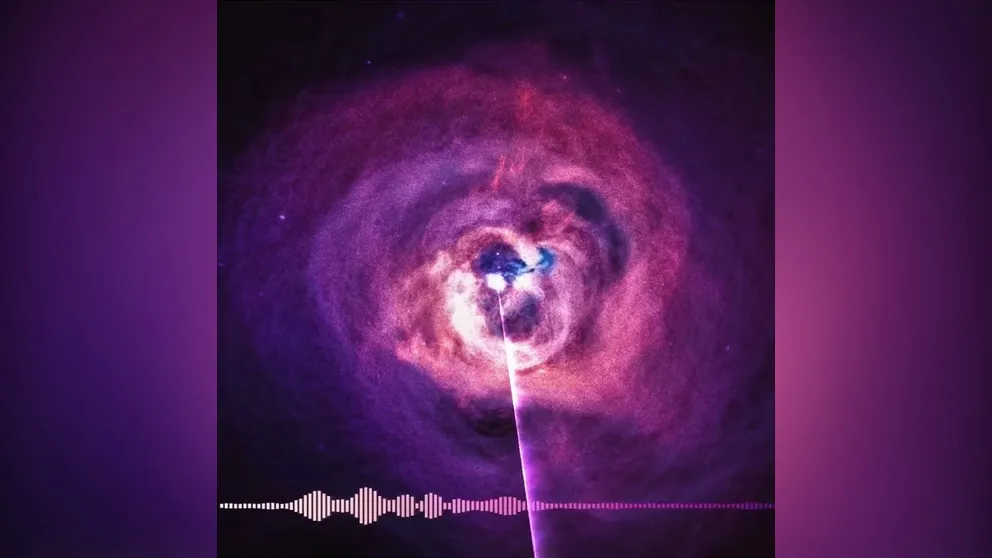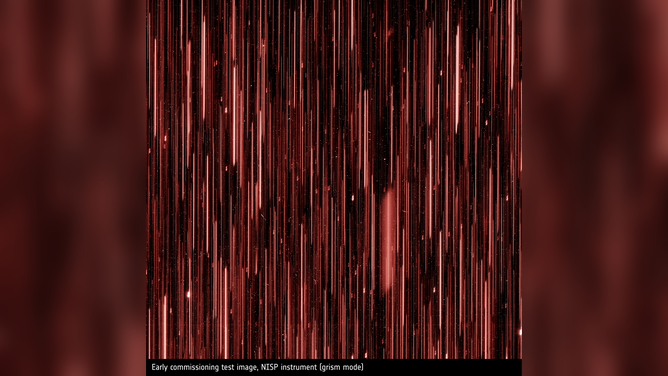Telescope used to study mysteries of universe releases first images in stunning detail
Images of billions of galaxies will be compiled to create the biggest 3D map of the sky, according to Euclid scientists. The fine detail will enable scientist to investigate the mystery of dark energy.
NASA unveils sound waves from black hole
NASA releases audio of a black hole at the center of a Perseus galaxy cluster.
The very first images from the European Space Agency's Euclid telescope show vivid detail of the stars and galaxies making up the universe, and the test images are said to be a tease of riches to come.
SpaceX delivered Euclid to orbit at the beginning of July, and scientists have just started testing the equipment. The images show details of galaxies and star clusters. After fine-tuning the telescope, the blobs below will become sharp images of billions of galaxies.

The image on the left was taken by the VISible instrument (VIS). The image on the right was taken by the Near-Infrared Spectrometer and Photometer (NISP). They are on the same scale, with the full versions of these images each being seven by seven arcminutes. These early test images were taken to check the instruments and review how the spacecraft can be further tweaked and refined.
(ESA/Euclid/Euclid Consortium/NASA / NASA)
"After more than 11 years of designing and developing Euclid, it’s exhilarating and enormously emotional to see these first images," said Euclid project manager Giuseppe Racca in a statement. "It’s even more incredible when we think that we see just a few galaxies here, produced with minimum system tuning. The fully calibrated Euclid will ultimately observe billions of galaxies to create the biggest ever 3D map of the sky."
EUROPEAN SPACE TELESCOPE LAUNCHED FROM FLORIDA WILL STUDY MYSTERIES OF UNIVERSE EXPANSION

This first VIS image is already full of detail; we see spiral and elliptical galaxies, nearby and distant stars, star clusters, and much more. But the area of sky that it covers is actually only about a quarter of the width and height of the full Moon.
(ESA/Euclid/Euclid Consortium/NASA / NASA)
Investigating the mystery of dark energy
The visible-wavelength camera, or VIS, took the images above. The Near-Infrared Spectrometer and Photometer or NISP (image below) images galaxies and measures the amount of light they radiate at different wavelengths. With wavelength data, scientists can measure distance.
Using visible and infrared light, ESA's Euclid space telescope will search for dark energy and its influence on the universe. To achieve this, Euclid will take images, creating a 3D map of one-third of the sky, viewing its evolution over 10 billion years.
"The outstanding first images obtained using Euclid’s visible and near-infrared instruments open a new era to observational cosmology and statistical astronomy," said Euclid Consortium lead Yannick Mellier in a statement. "They mark the beginning of the quest for the very nature of dark energy, to be undertaken by the Euclid Consortium."
SEE THE ‘WHIRLWIND’ OF IMAGES TAKEN DURING JAMES WEBB SPACE TELESCOPE'S FIRST YEAR
A scientist with the Euclid Consortium said that he is "utterly amazed" by each new image. And he is not alone. He said that he enjoys listening to the gasps around the room when others first look at images.
"We’ve seen simulated images, we’ve seen laboratory test images – it’s still hard for me to grasp these images are now the real Universe," said NISP instrument scientist Knud Jahnke in a statement. "So detailed, just amazing."

The fully assembled flight model of ESA’s Euclid mission’s NISP instrument in the cleanroom at the Laboratoire d'Astrophysique de Marseille before being wrapped in Multi-Layer Insulation.
(Euclid Consortium & NISP instrument team / NASA)
What are dark energy and dark matter?
"Dark energy" refers to the mystery cause of the expansion of the universe, and "dark matter" is the name of what causes the growth of cosmic structures, like galaxies. Scientists are still trying to figure out what dark matter and energy are. This field of study around the changes in our universe is known as cosmology.
It's estimated dark energy makes up 70% of the cosmos and dark matter is 25%, meaning we don't fully understand 95% of what makes up the mass of our universe.
According to ESA, the space telescope was designed to answer fundamental questions about the universe, including how the universe's expansion has changed over time and the forces behind it.


